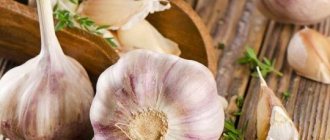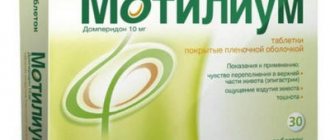Garlic is one of the important foods for the human body. It is often used as a dried seasoning for food. Its benefits for humans are enormous. Garlic is famous as an antiseptic product; it helps maintain blood vessels in tone, helps build muscle mass, increases testosterone levels, burns fat deposits, speeds up metabolism and helps strengthen the immune system.
Garlic is known to be able to combat bloating and even fight Helicobacter pylori.
But can or not garlic benefit the gastrointestinal tract for gastritis? The usual effect of this vegetable leads to an increase in the proportion of hydrochloric acid in gastric juice and an increased secretion of enzymes. Excessive intake of garlic in food will cause pain, vomiting and even burns of the mucous membrane.
The effect of vegetables on the human gastrointestinal tract
When consuming garlic raw, problems such as:
- Burning sensation in the mouth or stomach.
- Heartburn.
- Gas and bloating.
- Nausea and vomiting.
- Unpleasant body odor.
Garlic can literally burn through the intestinal mucosa and walls, and its excessive consumption can lead to perforation or a through hole. You should avoid eating this plant if you have gastrointestinal diseases.
For more information about the age at which garlic can be consumed and for what diseases its use can be harmful to health, read this article.
The use of garlic in the menu of a patient with gastritis
The use of this natural medicine with increased secretory production is strictly prohibited. Nutritionists rarely allow you to eat small amounts of garlic if the acidity value is low. Under no circumstances should you do this on an empty stomach.
It is best to start adding seasoning with 1 clove. If the person feels satisfactory, the dose can be repeated. Otherwise, you will have to change the additive to your dishes with a milder one.
A nutritionist and the patient’s diagnosis will definitely tell you whether you can eat garlic if you have gastritis. The product is strictly contraindicated during an exacerbation, as well as if the patient has increased secretory production of salt fluid. The product is prohibited for erosive gastritis.
If there are no contraindications, garlic is consumed raw; sometimes it can be chopped and added to soup or other dishes. But before the digestion process begins, the product will end up in the intestines, so it needs to be crushed. The only rule is that seasoning is added at the last stage of cooking, otherwise it will lose all its beneficial properties.
If there are no contraindications for gastritis, garlic is consumed raw, sometimes it can be chopped and added to soup or other dishes
Cabbage juice will help enhance the healing effect of the plant. To do this, you need to mix it with the liquid squeezed out of the garlic in a ratio of 150 ml to 30 ml. The medicine is taken 2 times a day. Another recipe is suitable for patients who do not have severe pain or severe symptoms. Make a paste out of 3 cloves. Add a pinch of salt and a glass of boiling water. The mixture should be infused for 60 minutes until it cools. Take the medicine three times for 3 days. A glass is usually enough for a day.
Garlic tincture is useful for atrophic gastritis if the acidity is low. For these purposes, 400 g of the product is cleaned and crushed. Next, the mass is placed in a glass container and closed with a lid, wrapped in a warm towel. After 4 hours, the garlic will release juice, which is poured with alcohol (250 ml). The container is once again wrapped and sent for tincture for 10 days. Then the liquid is filtered and again set aside for 2 days in a dark place.
Before starting treatment, you should definitely consult a gastroenterologist. A relapse may develop, so self-prescribing medications and using traditional medicine recipes for this disease can lead to negative consequences.
Can I eat if I have stomach problems or not?
Garlic can increase the level of hydrochloric acid in gastric juice , so in order not to harm the body, it is necessary to take into account the form of the disease.
In remission
In case of stable remission, it is allowed to consume a small amount of the product, provided there are no manifestations of the disease. But it is not recommended to eat garlic raw; it is better to add its cloves to meat or vegetable dishes, as it is possible that the disease may worsen and its symptoms may manifest. In small quantities, it helps normalize the mineral balance in the body.
In chronic form
Chronic gastritis is accompanied by inflammation of the gastric mucosa . In the absence of acute symptoms of the disease, it is allowed to consume a tiny amount of garlic, but not in its pure form.
It is better to add it as a seasoning to your favorite dishes.
Patients with chronic gastritis should be wary of such consequences of overeating this vegetable as:
- vomit;
- nausea;
- stomach ache.
The ability to eat garlic depends on the level of acidity of gastric juice.
For acute
A strict diet or even therapeutic fasting is indicated for acute forms of the disease . In the first days, it is necessary for the inflamed stomach to calm down; this is facilitated by eating steamed dishes, porridge (preferably oatmeal) and foods without spicy seasonings.
Garlic cloves are difficult to digest in the human body.
Drinking plenty of water will help relieve the stomach and soothe the mucous membrane. Garlic is strictly prohibited for acute gastritis and exacerbation of its chronic form. Along with garlic, eating fried, smoked, hot and spicy foods is not recommended.
Even after the acute pain subsides, it is necessary to adhere to a gentle diet for at least a month, gradually introducing irritating foods into the diet .
About the beneficial properties of the plant
When it comes to the beneficial properties of garlic, the first thing that comes to mind is its antimicrobial and antiviral properties. Phytoncides, which give garlic a sharp taste and aroma, suppress pathogenic microflora.
Other beneficial properties:
- Studies have proven the positive effects of plant components on the heart and blood vessels. People who regularly eat plant slices are characterized by a good state of the circulatory system. With regular use, excess vascular tension is reduced, tone and blood pressure are normalized. The product is useful for hypertensive patients.
- Young people leading an active lifestyle strive to build muscle mass through intense physical training. This is where garlic comes to the rescue. If you eat a few slices an hour before playing sports, the plant will increase the level of the male sex hormone testosterone in the blood, increasing your own strength and endurance of skeletal muscles.
- Eating a tart vegetable with a specific taste and smell accelerates metabolic processes in the body, leads to the burning of excess fat and strengthens the immune system.
- Including a couple of cloves of the product in the diet for three months leads to a decrease in the amount of fatty acids and cholesterol in the blood, reducing the risk of atherosclerosis, heart attack and other diseases.
- Garlic contains substances that prevent the development of thrombosis and thromboembolism. The risk of stroke or heart attack is reduced.
- The product contains 400 active components.
- In folk medicine, the plant has long been used as a means for the prevention and home treatment of colds and viral diseases. Due to the content of essential oils, garlic has a pronounced antiviral and antimicrobial effect and stimulates the body's immune defense.
- Traditional and official medicine have long used the anthelmintic properties of garlic. It is possible to treat helminthiases with garlic even in children.
Garlic is a savory spice and a natural remedy. Even such a useful substance has negative aspects and a number of contraindications for use.
How to eat with high and low acidity?
The content of hydrochloric acid in the digestive juice determines the possibility of consuming the product as food. Experts do not recommend taking risks and eating garlic when the acid level is high, since its cloves can cause a burning sensation in the esophagus (heartburn).
In turn, heartburn leads to irritation and damage to the mucous membrane of the esophagus and stomach. In extreme cases, the consequence may be a stomach and duodenal ulcer. In addition to garlic, vegetables containing coarse fiber such as turnips or radishes are not recommended for consumption.
The increase in acidity depends on factors such as:
- poor nutrition;
- an excess of fried and spicy foods;
- activity of Helicobacter pylori bacteria.
When the level of hydrochloric acid is low, a small amount of garlic is occasionally allowed in the diet, but if symptoms of the disease appear (for example, bloating), its use should be stopped.
You should not increase the amount of food you eat on your own . This may lead to worsening of the condition and exacerbation of symptoms of the disease.
When is it permissible to eat garlic for gastritis?
It has been clinically proven that eating garlic during gastritis may cause stomach pain, nausea, vomiting, abdominal discomfort, heartburn and bloating.
It has been clinically proven that eating garlic during gastritis may cause stomach pain, nausea, vomiting, abdominal discomfort, heartburn and bloating.
In addition, this product causes a burn to the gastric mucosa, so experts recommend eating garlic only after the onset of stable remission of the disease. If the period of exacerbation is over and the patient's condition has stabilized, garlic is prescribed in small quantities for preventive purposes.
This product is often used raw, ground or dried as a seasoning. Thanks to its piquant taste and aroma, this plant is used in many recipes. But you still shouldn’t get carried away, especially for people with acute gastritis. There are, of course, exceptions to the rules.
For example, patients with gastritis with low acidity are allowed garlic or garlic pulp. The second helps cleanse the intestines from the processes of rotting and fermentation due to undigested food.
Another thing is a thermally processed product. It can be pre-steamed - boiled, baked or stewed. Garlic can also be pre-filled with boiled water, hot olive or sunflower oil and added as an ingredient to a sauce or dietary salad. During remission of gastritis and ulcers, garlic is only allowed in this form by specialists.
Does it matter how it's cooked?
In its raw form, garlic contains a lot of useful vitamins and properties, and despite its aggressive effect on the stomach, it can have a healing effect. However, if you have gastritis, it is better not to use it in its pure form. If its slices are added to various dishes and subjected to heat treatment (boiled or baked), it loses most of its properties, including destructive ones.
Baked garlic has a beneficial effect on the liver, helping to remove toxins and waste (read about whether you can eat garlic if you have liver disease). Boiled, it improves digestion, helps in lowering cholesterol and fighting parasites.
Homemade recipe
One of the unconventional ways to treat gastritis is with the help of homemade garlic tincture. For it you will need 350 g of fresh garlic, which is chopped, kneaded and placed in a glass jar. The container is closed with a lid and wrapped in a blanket for several hours. Then a glass of alcohol is poured into the jar with the garlic mass. Everything is wrapped in a dark cloth and placed in a cool place for 10 days.
We recommend: Onions for gastritis
Then the mass is filtered and the liquid is left for another 2 days under the same conditions. Now the tincture is ready. True, doctors do not recommend such treatment. According to gastroenterologists, after garlic tincture, the disease relapses and colic appears in the stomach.
When treating gastritis, it is better to stick to a traditional diet, consult a doctor often, and consume garlic only when the disease goes into remission.
Possible negative consequences
- If you are overweight, eating garlic is not advisable, as it increases appetite.
- In case of stomach diseases, it irritates and damages the mucous membrane.
- For digestion, excessive consumption of the product threatens to disrupt chemical processes.
Do you want to know at what age can you give garlic to children? And also read our materials on how to properly consume this vegetable for:
- pregnancy;
- breastfeeding;
- cholecystitis and pancreatitis;
- gout;
- diabetes type 1 and 2;
- problems with blood pressure.
Rules for using garlic for gastritis
Rules for using garlic for acute gastritis
The answer will be strictly negative. The patient adheres to a diet and forgets about fruits, most vegetables, as well as meat and fish. On the first day, fasting is indicated - the mucous membrane “rests” and recovers from severe inflammation. Imagine what will happen if you eat even one slice on an empty stomach! Drink water, please, but garlic and any other rough food should be excluded.
Rules for using garlic for chronic gastritis
In case of chronic gastritis, the diet is formed based on the level of acidity. However, we warn you right away: medicine knows of cases when, after eating garlic, a patient’s duodenitis worsened, and even an ulcer formed!
To make the effect of garlic on gastritis more gentle, add garlic to a meat or vegetable dish.
Clinical manifestations were quite strong: severe pain, diarrhea or constipation. As a rule, such consequences occur when a person eats garlic with gastritis with high acidity. The most effective treatment will be nullified.
Rules for using garlic for low stomach acidity
Garlic is allowed if the stomach acidity is low. But its quantity should be scanty. Start with a small clove, and if there is no pain, you can eat it little by little with your main dishes.
Raw or boiled garlic - which is better? This question is often asked by patients who would like to use this seasoning with first and second courses. Garlic is often added whole to pilaf. However, even if it is well stewed or boiled in water, this does not mean that the dosage can be increased. Of course, it ceases to be tart and bitter. But it's better not to take risks. So the answer to the question whether boiled garlic can be used for gastritis is positive under one condition - the dosage remains small.
To make the effects of garlic more gentle, add a few cloves to a meat or vegetable dish. Remember the recommended dosage, do not forget about your diet, and taking medications. All this is the basis for a speedy recovery.
How much is allowed to be consumed?
In the absence of symptoms of acute gastritis, the permissible intake of garlic is 1-2 cloves per day.
It is advisable to eat garlic in cooked form , and in no case exceed the permissible values.
Thus, we found out whether it is possible to eat garlic with gastritis. It turned out that there could be much more harm than good. Of course, sometimes you want to add some variety to your meager diet, but there is no need to risk your health. It is better to abandon the raw vegetable in favor of seasoning for the main dish, this will reduce the risk of exacerbation of symptoms and deterioration of well-being.
Harmful properties of garlic
Despite the numerous beneficial properties of the vegetable, you should not get carried away with it. Excessive consumption of plants for gastritis leads to a deterioration in health.
- The vegetable fiber in garlic is difficult to digest in the stomach. With gastritis, excess load will lead to an exacerbation of the process.
- The bitterness and essential oils contained in garlic have an irritating effect on the mucous membrane and stimulate an additional release of hydrochloric acid. This will negatively affect the condition of the mucous membrane of the digestive canal.
- Even healthy people are not recommended to consume more than 3 slices per day, otherwise heartburn and abdominal pain are likely to occur.











